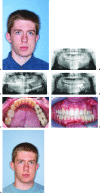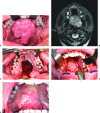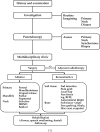Reconstruction of head and neck defects: a systematic approach to treatment
- PMID: 20567709
- PMCID: PMC2884883
- DOI: 10.1055/s-2008-1081398
Reconstruction of head and neck defects: a systematic approach to treatment
Abstract
Reconstruction of composite maxillofacial defects after tumor excision or trauma is difficult. The role of the reconstructive surgeon is to have a diverse armamentarium of reconstructive options to enable an aesthetic and functional reconstruction while minimizing the morbidity to the patient. This article will present a systematic review of composite maxillofacial reconstruction with free tissue transfer.
Keywords: Reconstruction; mandible; maxilla; osteocutaneous free flaps.
Figures


















References
-
- Gilbert A. Vascularized transfer of the fibula shaft. Int J Microsurg. 1979;1:100.
-
- Gilbert A, Teot L. The free scapular flap. Plast Reconstr Surg. 1982;69:601–604. - PubMed
-
- Hidalgo D. Fibula free flap; a new method of mandible reconstruction. Plast Reconstr Surg. 1989;84:71–79. - PubMed
-
- Manchester W. Immediate reconstruction of the mandible and the TMJ. Br J Plast Surg. 1965;18:291–303. - PubMed
-
- Taylor G, Miller D FJH. The free vascularized bone graft: a clinical extension of microvascular techniques. Plast Reconstr Surg. 1975;55:533–544. - PubMed

